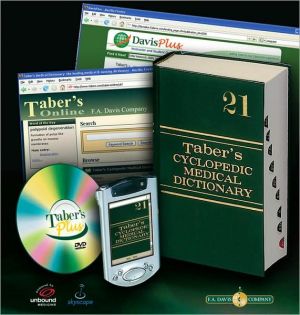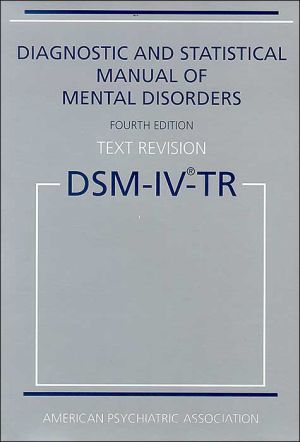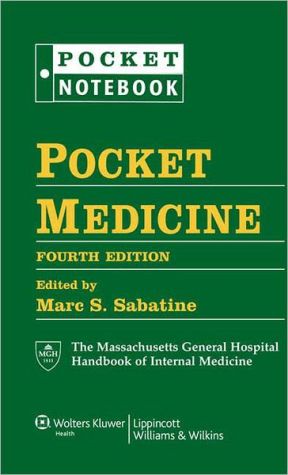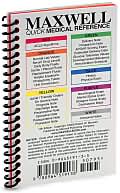The Massachusetts General Hospital/Mclean Hospital Pocket Handbook of Psychiatry
Prepared by the residents and faculties of the renowned Massachusetts General Hospital and McLean Hospital, this pocket handbook is packed with succinct, practical, accessible information on the diagnosis and treatment of psychiatric disorders. Major sections include psychiatric emergencies, symptom-based diagnosis and treatment, special populations, and treatment approaches including psychopharmacology. The book is written in a quick-scanning outline format with boxes, tables, and lists to...
Search in google:
Prepared by the residents and faculties of the renowned Massachusetts General Hospital and McLean Hospital, this pocket handbook is packed with succinct, practical, accessible information on the diagnosis and treatment of psychiatric disorders. Major sections include psychiatric emergencies, symptom-based diagnosis and treatment, special populations, and treatment approaches including psychopharmacology. The book is written in a quick-scanning outline format with boxes, tables, and lists to provide high-yield information at a glance. Doody Review Services Reviewer:Steven T. Herron, MD(University of Arizona Health Sciences Center)Description:Compiled as a reference for trainees in psychiatry residency training programs, this condensed book addresses many of the core principles in the assessment and treatment of mentally ill patients.Purpose:This work attempts to highlight and briefly explain many of the fundamental concepts related to assessing and treating psychiatric patients in both acute and long-term settings.Audience:Though potentially useful for medical students or individuals with specialty training in other fields of medicine, this handbook targets residents who are about to enter or are currently taking part in training to become competent psychiatrists.Features:With slightly less than 250 pages, this book concentrates on practical information beginning with the psychiatric evaluation and progressing through psychiatric emergencies, psychiatric symptoms and management, special populations, treatment modalities, to end with clinical references. It presents the information in a bulleted list format and is packed with tables and charts, which is consistent with reference guides. Chapters end with a short list of references. Assessment:The challenge of manuals designed for residents and medical students interested or training in psychiatry is navigating the fine line between brevity and usefulness. This book is a manageable size and easy to carry in a pocket or folder. More importantly, it appears to cover most areas of concern related to assessing and treating psychiatric patients in various settings. Detail has been sacrificed for a concise presentation, but it is assumed readers will reference other materials for more in-depth information when needed. The tables and charts are well organized and easy to decipher, and the section addressing psychiatric emergencies is well done. The major oversights are in the presentation of personality disorders and the omission of a discussion regarding some of the main ethical issues unique to psychiatric practice.
\ From The CriticsReviewer: Steven T. Herron, MD(University of Arizona Health Sciences Center)\ Description: Compiled as a reference for trainees in psychiatry residency training programs, this condensed book addresses many of the core principles in the assessment and treatment of mentally ill patients.\ Purpose: This work attempts to highlight and briefly explain many of the fundamental concepts related to assessing and treating psychiatric patients in both acute and long-term settings.\ Audience: Though potentially useful for medical students or individuals with specialty training in other fields of medicine, this handbook targets residents who are about to enter or are currently taking part in training to become competent psychiatrists.\ Features: "With slightly less than 250 pages, this book concentrates on practical information beginning with the psychiatric evaluation and progressing through psychiatric emergencies, psychiatric symptoms and management, special populations, treatment modalities, to end with clinical references. It presents the information in a bulleted list format and is packed with tables and charts, which is consistent with reference guides. Chapters end with a short list of references. "\ Assessment: The challenge of manuals designed for residents and medical students interested or training in psychiatry is navigating the fine line between brevity and usefulness. This book is a manageable size and easy to carry in a pocket or folder. More importantly, it appears to cover most areas of concern related to assessing and treating psychiatric patients in various settings. Detail has been sacrificed for a concise presentation, but it is assumed readers will reference other materials for more in-depth information when needed. The tables and charts are well organized and easy to decipher, and the section addressing psychiatric emergencies is well done. The major oversights are in the presentation of personality disorders and the omission of a discussion regarding some of the main ethical issues unique to psychiatric practice.\ \ \ \ \ From The CriticsReviewer:Steven T. Herron, MD(University of Arizona Health Sciences Center)\ Description:Compiled as a reference for trainees in psychiatry residency training programs, this condensed book addresses many of the core principles in the assessment and treatment of mentally ill patients.\ Purpose:This work attempts to highlight and briefly explain many of the fundamental concepts related to assessing and treating psychiatric patients in both acute and long-term settings.\ Audience:Though potentially useful for medical students or individuals with specialty training in other fields of medicine, this handbook targets residents who are about to enter or are currently taking part in training to become competent psychiatrists.\ Features:With slightly less than 250 pages, this book concentrates on practical information beginning with the psychiatric evaluation and progressing through psychiatric emergencies, psychiatric symptoms and management, special populations, treatment modalities, to end with clinical references. It presents the information in a bulleted list format and is packed with tables and charts, which is consistent with reference guides. Chapters end with a short list of references. \ Assessment:The challenge of manuals designed for residents and medical students interested or training in psychiatry is navigating the fine line between brevity and usefulness. This book is a manageable size and easy to carry in a pocket or folder. More importantly, it appears to cover most areas of concern related to assessing and treating psychiatric patients in various settings. Detail has been sacrificed for a concise presentation, but it is assumed readers will reference other materials for more in-depth information when needed. The tables and charts are well organized and easy to decipher, and the section addressing psychiatric emergencies is well done. The major oversights are in the presentation of personality disorders and the omission of a discussion regarding some of the main ethical issues unique to psychiatric practice.\ \








![Taber's Cyclopedic Medical Dictionary [With DVD] Taber's Cyclopedic Medical Dictionary [With DVD]](/application/data/covers/56/01/9780803615601.jpg)